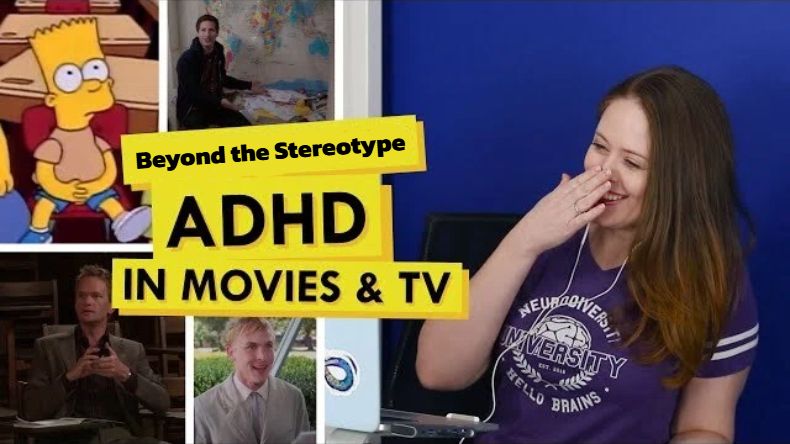
Beyond the Stereotypes: Untangling ADHD's Complex Media Tapestry
ADHD in film, TV, and literature is often reduced to a shorthand: the hyperactive boy, the scattered genius, or the impulsive troublemaker. While awareness is growing, these portrayals frequently miss the profound internal reality of ADHD, trading clinical nuance for narrative convenience.

Let's dissect the tropes and spotlight what authentic representation could look like.
The Problematic Trinity of Tropes
1. The Human Tornado:
Endless fidgeting, chaotic outbursts, and perpetual motion (think young Simba in The Lion King on caffeine). This captures hyperactivity but ignores the quiet struggles of inattentive ADHD – the paralysis, the mental fog, the crushing weight of unmet expectations.
2. The Eccentric Genius:
Sherlock Holmes (Cumberbatch version), Shawn Spencer (Psych) – their ADHD is a superpower. While cognitive bursts exist, framing ADHD solely as brilliance erases the daily battles with executive dysfunction, emotional dysregulation, and chronic shame.
3. The Manic Pixie Plot Device:
Quirky, impulsive female characters (often unnamed) exist solely to inject chaos or "inspire" the male lead. This reduces ADHD to a shallow, gendered caricature, ignoring women's frequent late diagnoses and internalized struggles.
The Missing Pieces: What Media Ignores
-
The Internal Storm: We rarely see the constant mental noise, the rejection sensitive dysphoria (RSD) crippling social interactions, or the paralyzing overwhelm of simple tasks ("wall of awful").
-
Masking Mastery: The exhausting effort to appear "normal" – suppressing stims, forcing focus until burnout, rehearsing conversations – remains largely invisible.
-
Sensory Overload: The visceral impact of fluorescent lights, overlapping sounds, or scratchy fabrics is seldom portrayed with authenticity.
-
The Grief of Potential: The profound sorrow of knowing your capabilities but being perpetually thwarted by your own neurology is a deeply relatable, yet unexplored, narrative.
Glimmers of Authenticity & The Path Forward
Jessica Jones showed hyperfocus as both weapon and trap. Everything Everywhere All At Once visually depicted overwhelm and fractured attention (though not explicitly ADHD). Literature like The Queen of Distraction offers raw, personal insight. True progress requires:
-
Centering Lived Experience: Involve ADHD creators, writers, and consultants at every stage.
-
Embrace Nuance: Show ADHD across genders, ages, and cultural backgrounds. Highlight co-occurring conditions (anxiety, depression).
-
Show the Struggle AND the Strategy: Depict not just chaos, but coping mechanisms (medication realistically, therapy, body doubling, systems).
-
Move Beyond Quirk: Treat ADHD as a complex neurotype, not a punchline or plot catalyst.
Authentic ADHD representation isn't about perfection; it's about humanity. It's showing the exhaustion behind the energy, the intelligence despite the forgetfulness, and the resilience forged in the fire of constant neurological challenge. When media embraces this complexity, it doesn't just entertain – it validates, educates, and dismantles stigma.